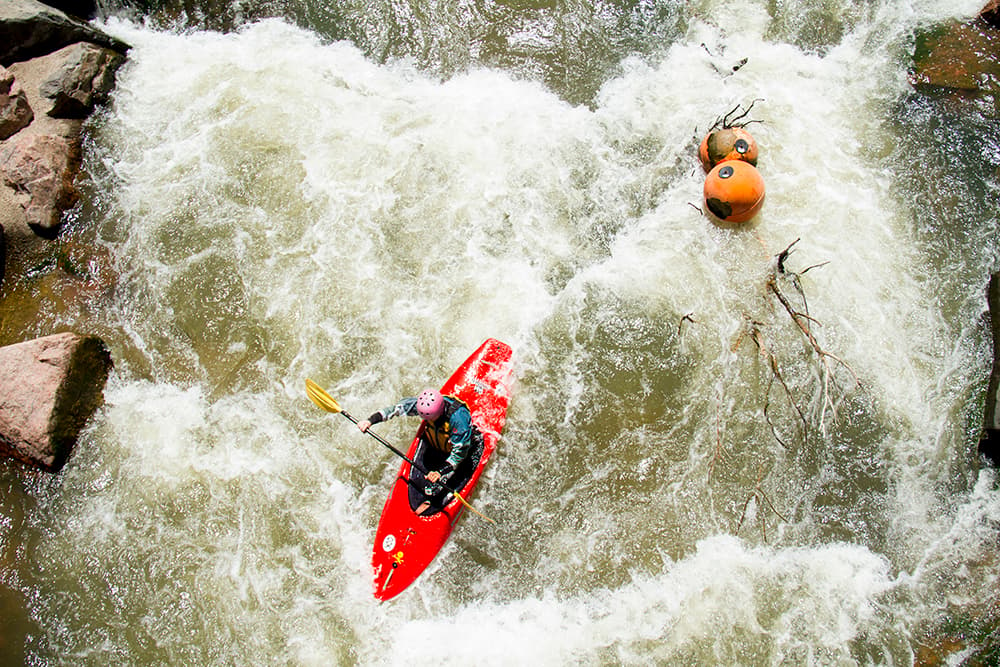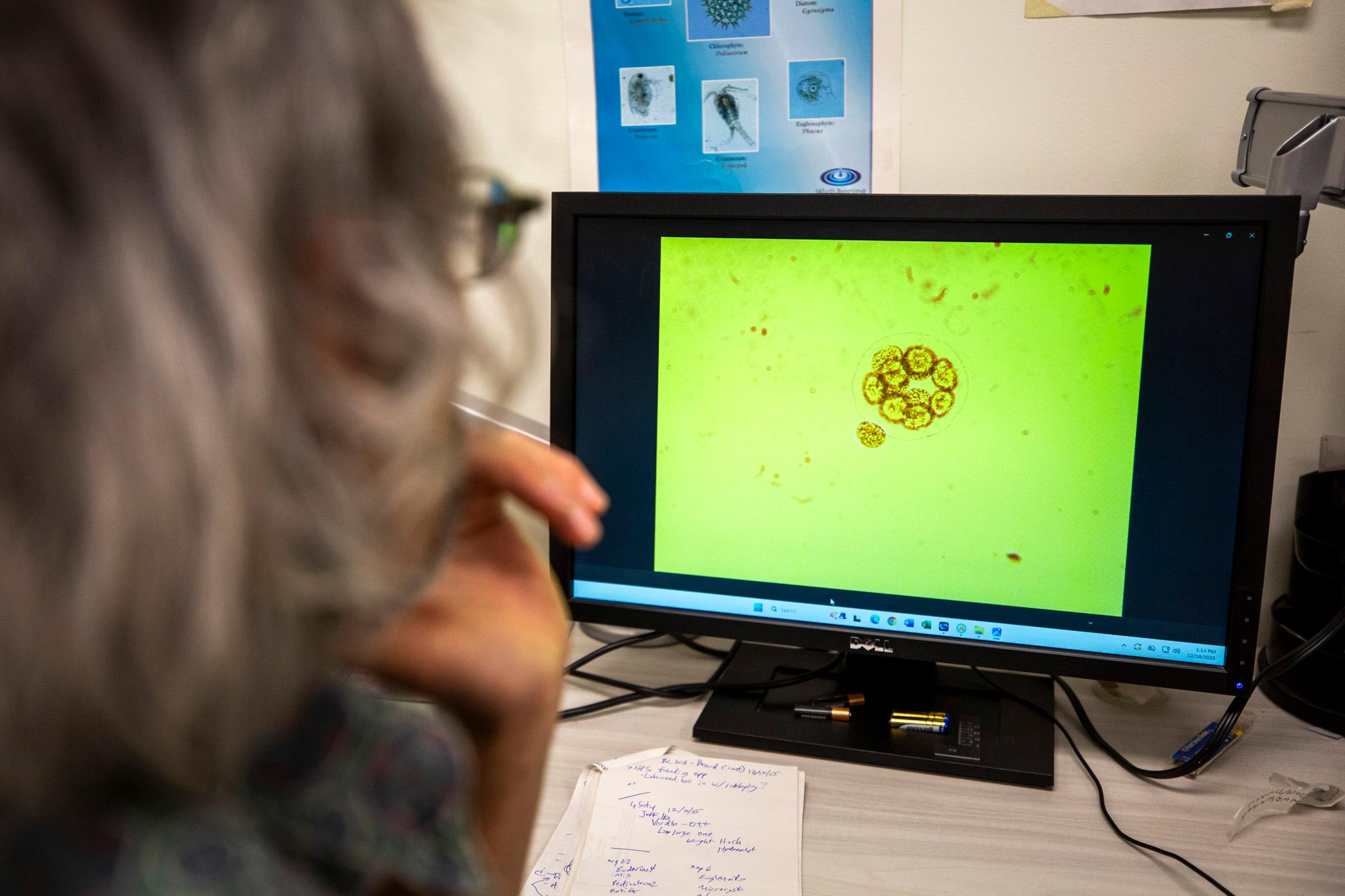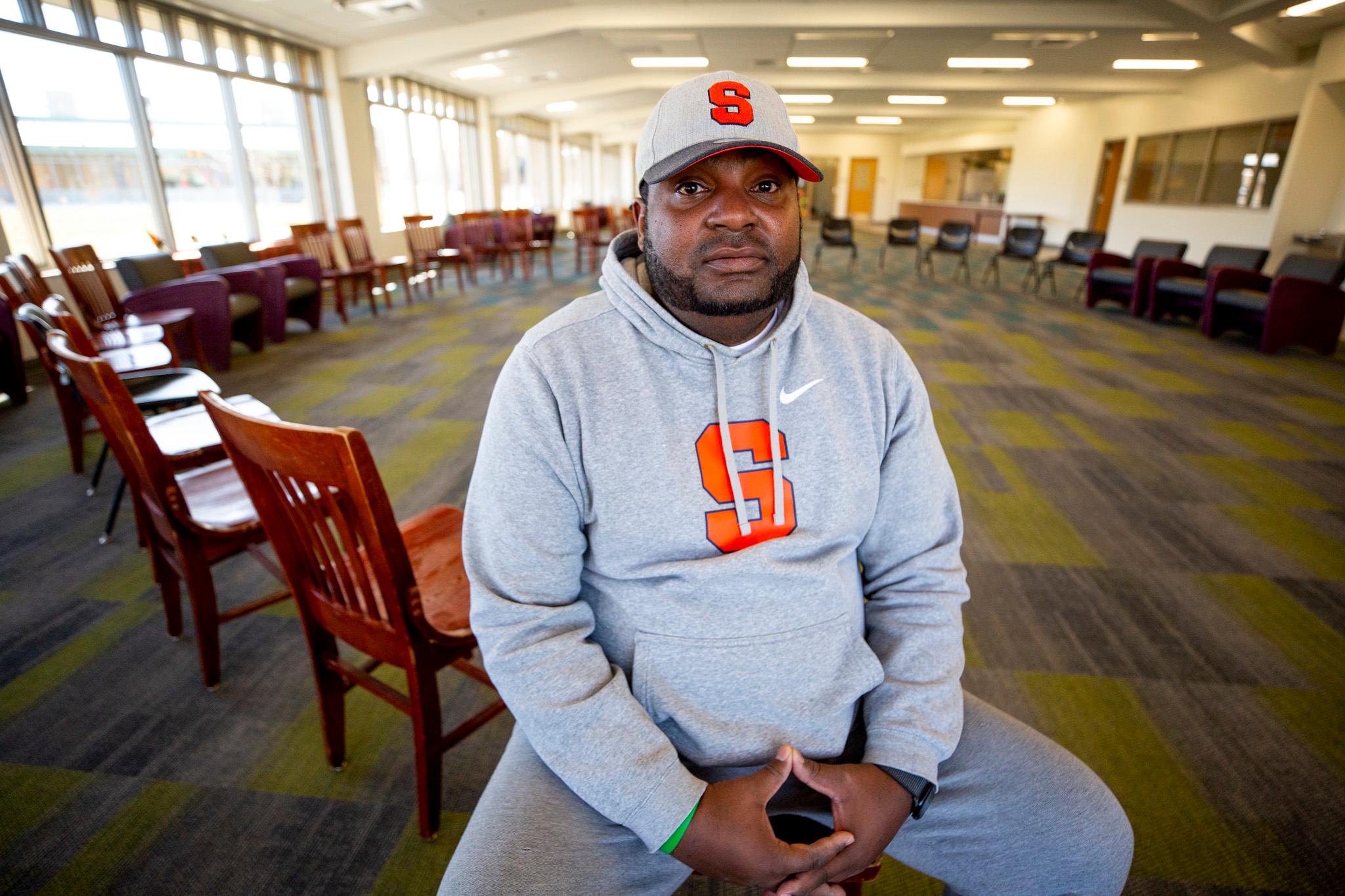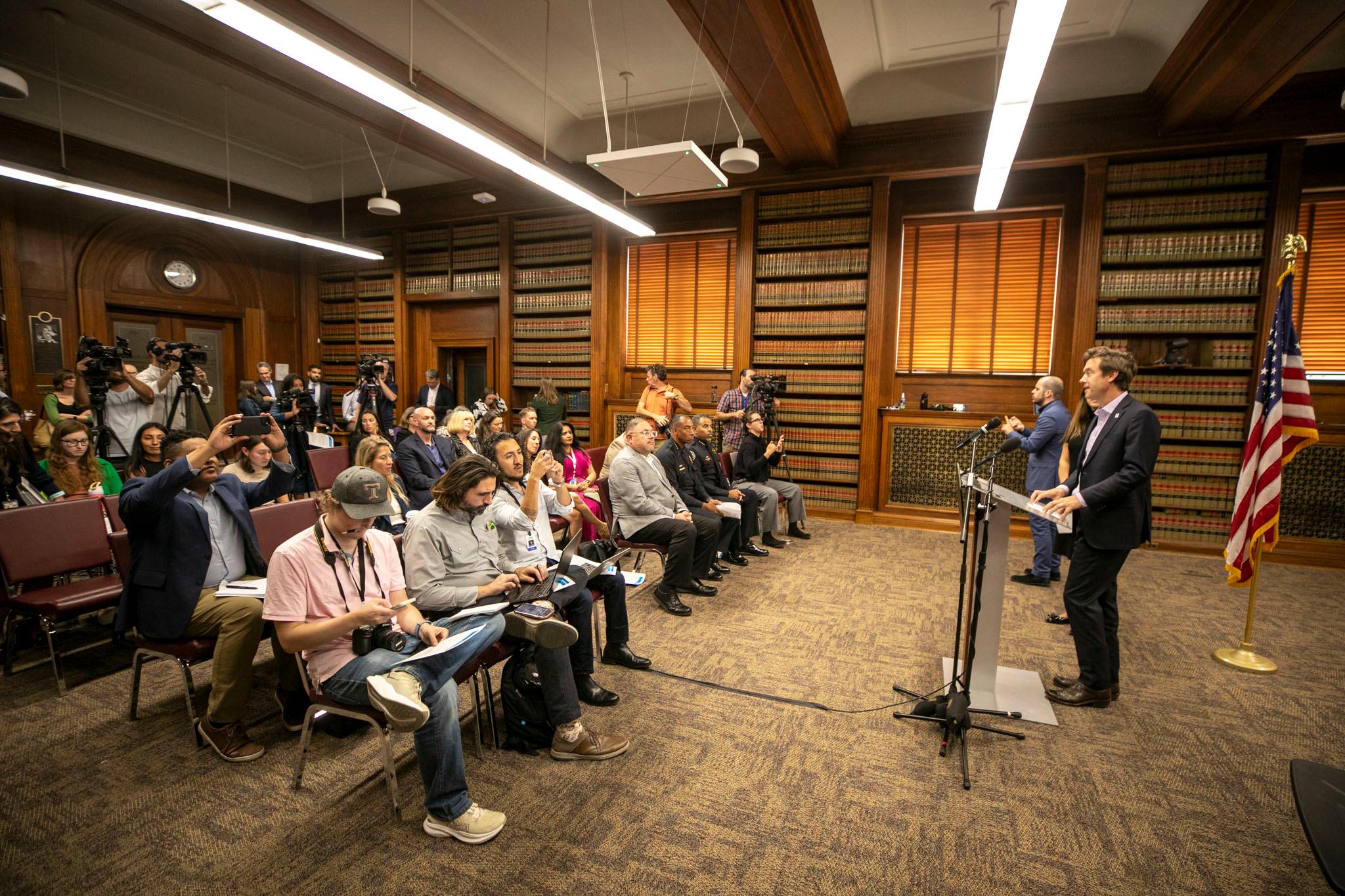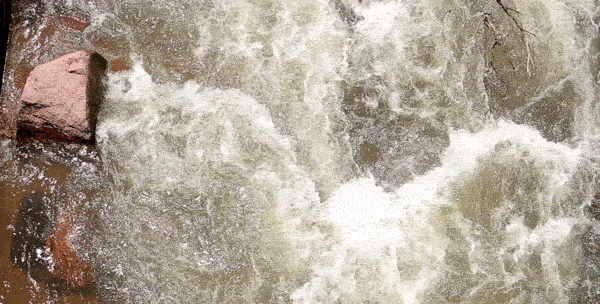
It's Shane Tucker's second day in Denver, and his first time in a kayak. Standing beneath Speer Boulevard in a boater's rubber skirt, he knows pretty well what's about to happen.
"Yeah, I'm probably going to go swimming," he says, eyeing the rush of water squeezing past Confluence Park.
Whether he stays in his friend's red kayak or not, Shane is about to dive into a select group: the urban boaters.
"Well, you know people call it Effluence Park," says Alex Tyk, owner of the red boat, "and talk about how you get really sick."
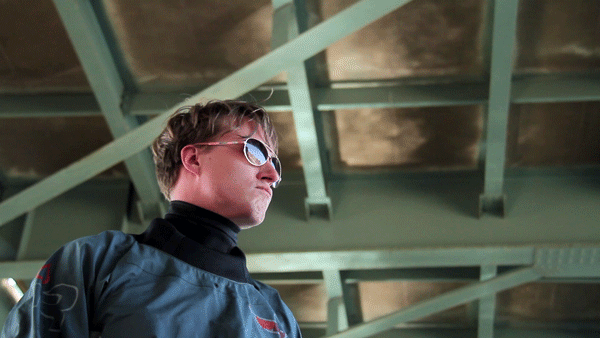
A lot of paddlers who plunge happily down remote waterfalls would never touch the South Platte. Yet the number of brightly colored boats on the river has grown steadily over the years — and that's just one of the first results of a larger plan to bring people back to Denver's hometown river.
The area's builders and planners are deep in a second phase of reconstruction for the South Platte. They're trying to bring people closer to its banks than ever -- including those who aren't aquatic athletes.
This is what Shane is going to try.
I have two questions for Shane.
The first is whether he knows how to escape his kayak, which I think he'll definitely need to do. The second is whether he will meet E. coli, the fecal bacteria that loves urban rivers in summertime.
I can't recommend Shane's approach to boating, and I probably should tell him that more forcefully. The safest way to learn kayaking is to practice in a pool or lake, with a buddy nearby, so you can learn to right the kayak when it flips upside down, or at least to properly escape it.
He goes anyway, and he gets the boat turned sideways and flips in the first riffle. He's out of the boat within seconds, floating past the kids sheltering under the bridge and into the South Platte's broader brown current. Half of Confluence Park is watching.
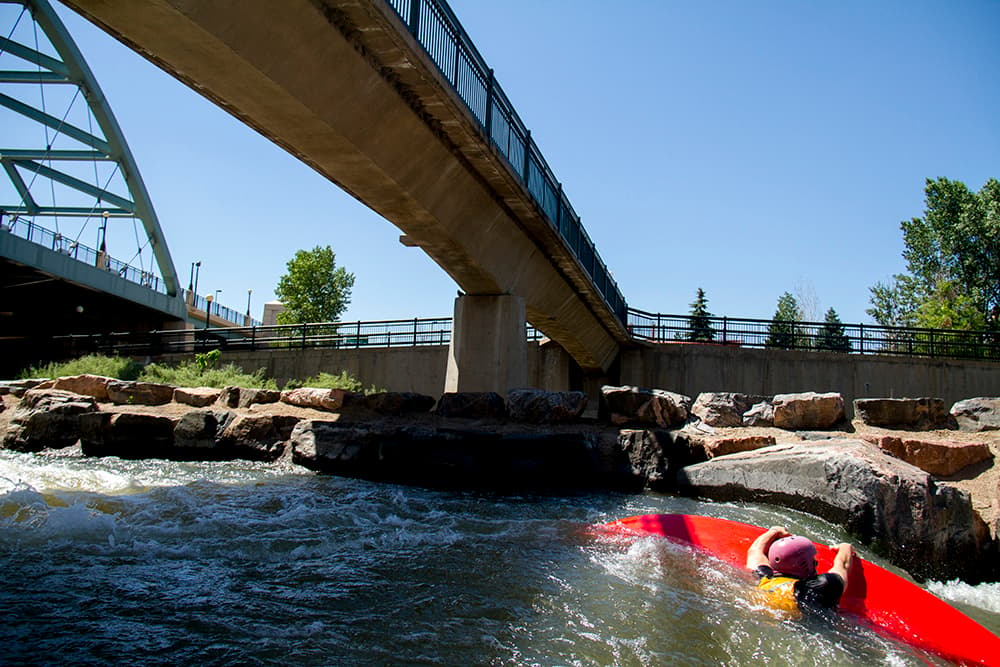
You can't blame the doubters.
“It was basically a flowing tube of pollution” says Jeff Shoemaker, director of The Greenway Foundation, referring to the South Platte of the 1960s. “It was ecologically dead. There was no fish, no wildlife. It was dangerous, in terms of any kind of body contact.”
Shoemaker is a former lawmaker, as was his father. The elder was described upon his death as the river's "visionary," for seeing that the South Platte could be not just cleaned but also reopened to the public.
Boat trips down the river were a way to convince people of its safety, and the opening of Confluence Park in the 1970s was celebrated with runs down its manmade rapids.
A lot of the restoration and reshaping of the South Platte has been good for boaters and the river at the same time. For example, the city has opened up dammed areas to create playful rapids for boaters, which also can clear up the river’s quality. (Other efforts include treatment ponds for stormwater and the replanting of vegetation on the riverbanks, which can filter pollutants.)
Today, Shane and company are far from the only people playing on the South Platte. A trip down the river might pass people blasting music and surfing beneath the South Platte Pedestrian Bridge, elementary schoolers splashing in waders and loyal fishers on the banks
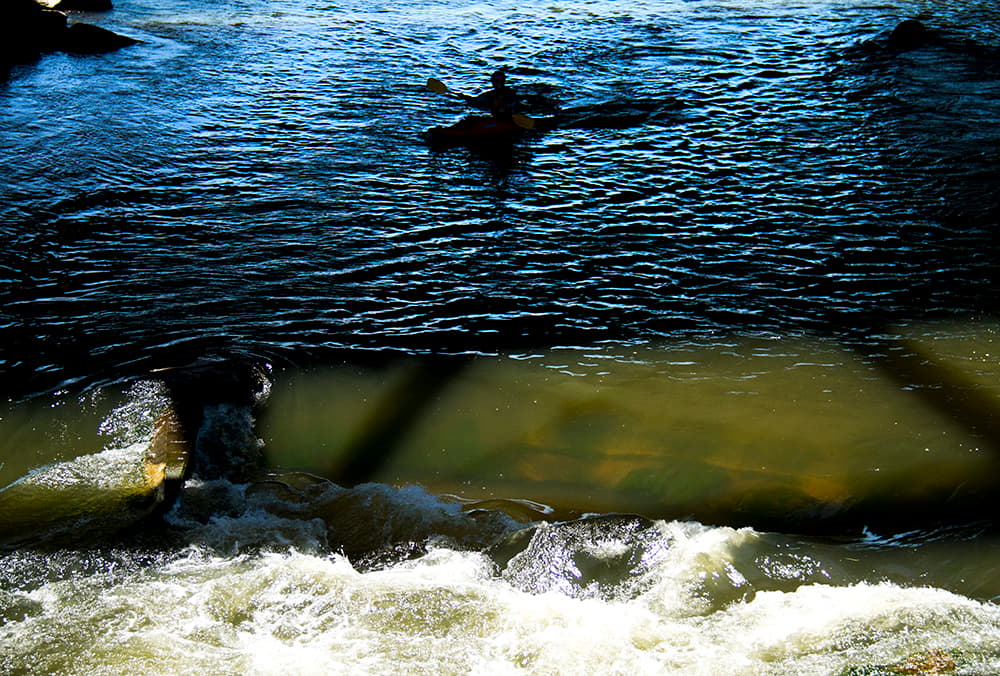
"I tell people I fish the South Platte, and they go 'What?'" says Ronnie Crawford, who once owned the punk clothing store Rudely Decadent.
Now 73, he's an advocate and conservationist for the "DSP," short for Denver South Platte. He's caught and returned fish up to 24 inches long, from carp to sunfish and bass, and he posts his biggest gets to a couple of Colorado fishing pages on Facebook.
He won't eat fish from the river, but he sees the South Platte as more accessible and inviting than the remote little mountain streams that his peers idolize.
"Other people didn't get it,"he says. "It's so slow in coming, I can't believe it — but it's coming: awareness of the South Platte and its virtues."
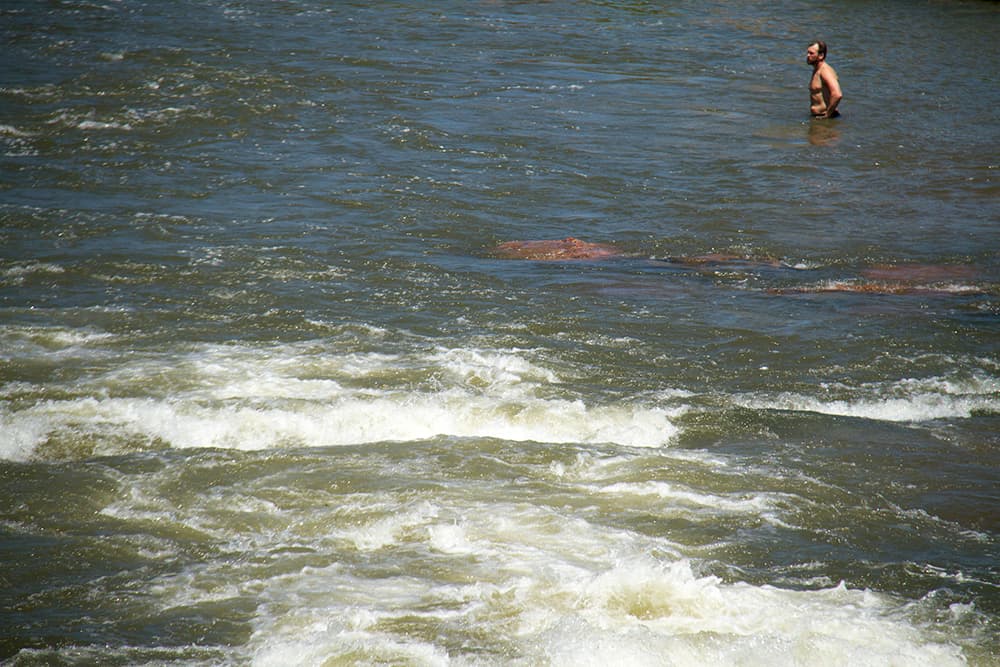
The city’s goal – and it's an ambitious one– is that by 2020 people will be able to safely swim in any of Denver’s waters, including the South Platte.
Boating is already allowed but swimming is ill advised, at least by government standards, in the South Platte and Cherry Creek. The main threat is E. coli, an illness-causing bacteria that loves animal and human excrement. Unfortunately, it’s most dangerous in the warmer summer months.
The city keeps the interactive map above stocked with the latest water quality information. Green icons indicate a level of E. coli that is acceptable for swimming, according to state standards — although, again, the city does not allow swimming.
The government is trying to improve these numbers by controlling and treating runoff water that would otherwise pour straight into the river. One way to do that is by capturing stormwater in special tanks that will settle out some of the trash, and another is by putting more trees on gentler banks.
It’s hard to tell if the city will actually achieve its 2020 goals. Testing shows a “gradual improvement” on Cherry Creek, the city reports, with water quality good enough for swimming anywhere from 40 percent to 80 percent of the time in recent years. The South Platte, however, has shown “no obvious trends.”
In other words, the river is generally safe for boating, but you’ll want to keep your mouth shut if you fall in.
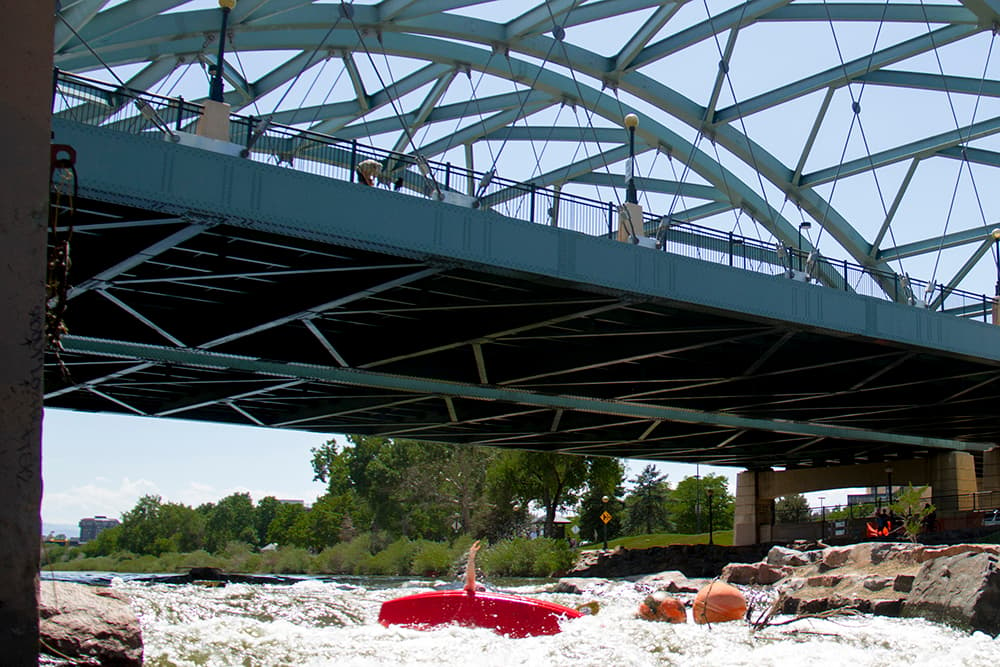
What about everyone else?
The South Platte still is not a very hospitable place. Its greenways run uninterrupted for miles and miles, yet water fountains are rare. Its long paths and sparse stopping points seem to be designed for people on the move – for runners and cyclists and people in boats. Long stretches of it remain an urban wilderness and campground.
That will change, to an extent, with a $35 million set of renovations underway at parks along the South Platte.
Take River North Park for example. Scheduled to start construction next year with $3.9 million in city funding, it will put green space and community buildings along the South Platte at 35th Street, near the planned location for a pedestrian bridge over the river.
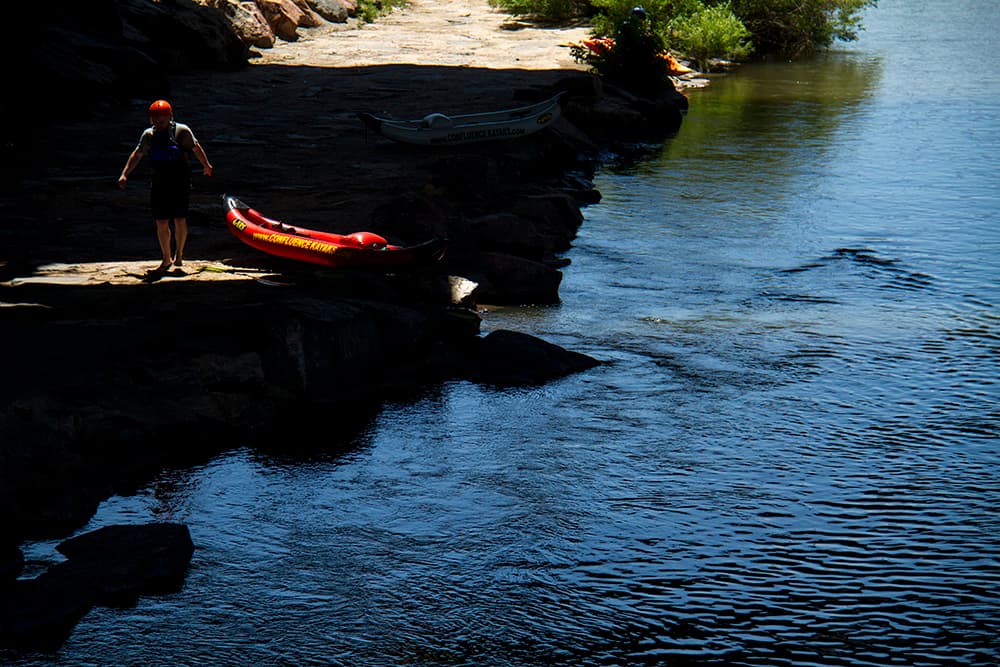
"We see this as a place they’re going to be walking their dog, they’re going to be strolling. This is going to be their outdoor living room, so to speak, and not as much guys and girls in spandex riding 30 miles per hour," says Greg Dorolek, principal at Wenk Associates, the firm designing the park.
Eventually, the park's proponents want to see the riverbank near the park converted from a roadway (Arkins Court) to a pedestrian area, with restaurants and other commercial outlets looking out over the South Platte, though that plan is not approved yet.
"It is targeting what really lacks in our city: You can’t get a cup of coffee, have a beer, have a burger anywhere along the Platte. ... If you want to ride your bike or experience the river on a boat, you can do that, but we’re not using the river to its full potential."
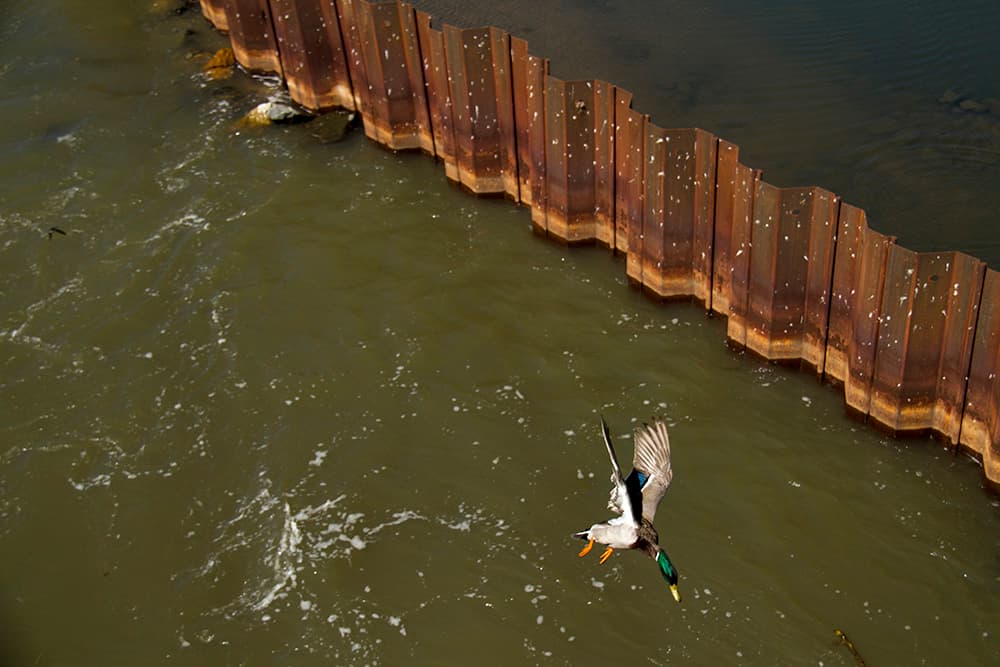
Other recent and ongoing river plans include:
- Johnson Habitat Park, completed last year, now has a concrete jetty, stone amphitheater and a fire pit along the river.
- Weir Gulch has been restored to a more natural state, with easy access to where its stream meets the South Platte.
- Grant Frontier Park will reopen this year with an island, terraced walls by the river and a sweet new playground, along with new trails.
- Pasquinel's Landing now has a secondary river channel running straight through its heart, plus a new picnic area and trails.
- Confluence Park, the original riverfront park, is being remade with a huge pedestrian promenade that will step down into the river near the downtown REI, though that project has been delayed by construction complications.
- Globeville Landing will be rebuilt in 2017 with new wetlands, an observation deck, and a new gathering area.
Wait. What about Shane?
"Yeah, that was not, that was not very good," he says as he lugs the kayak back up the path.
"It was a little bit scary — I thought it was going to be easier than it was ... I had no idea what I was doing, so I panicked."
Then he tries again.
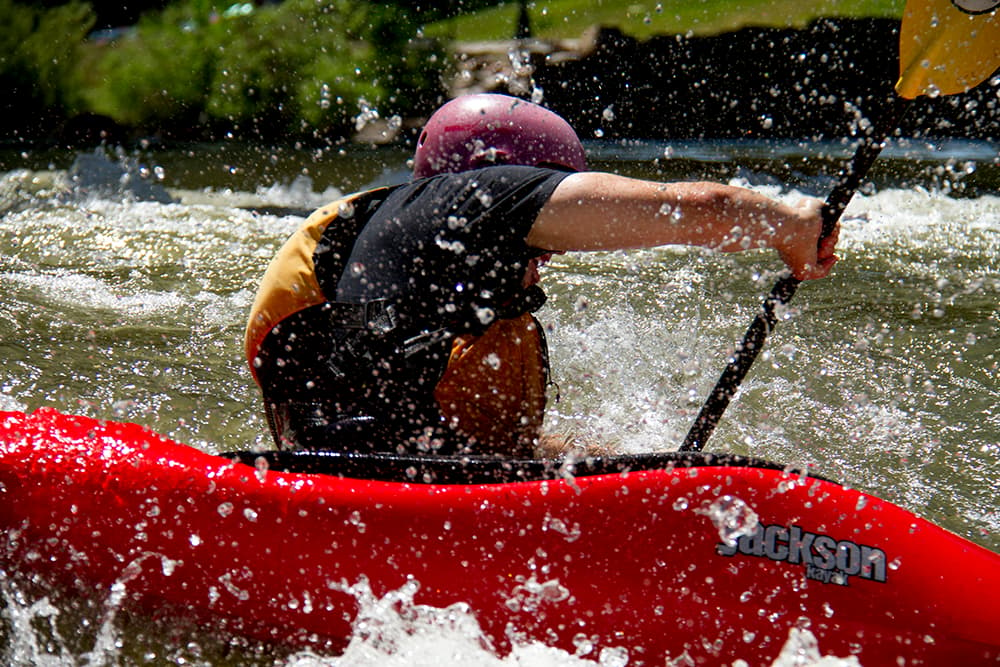
What about me? I want to go boating.
Please don’t jump onto the South Platte without some boating experience and the proper safety equipment. Rapids in the urban section run between Class II and Class III, which can include “moderate, irregular waves” that require “complex maneuvers,” according to the American White Water classifications.
Basically, if you don’t know how to boat, get help from an expert. Here are a couple – email [email protected] with additions:
- CityWild runs rafting trips straight through Denver on the South Platte. Up to seven people can ride in each boat, with the price per boat ranging from $140 to $250, plus optional transportation costs.
- Confluence Kayaks offers lessons and guided trips in kayaks, including a $159 run past downtown in an inflatable kayak called, most excellently, "a duckie."
If you plan to go without a guide, you can check in with the U.S. Forest Service’s South Platte Ranger District at 303-275-5610.

